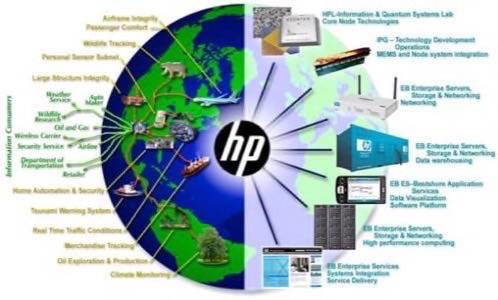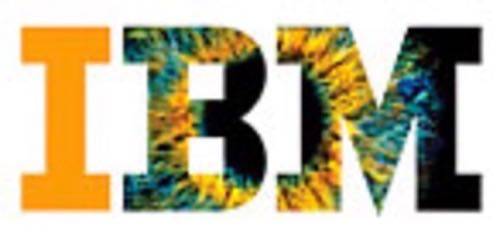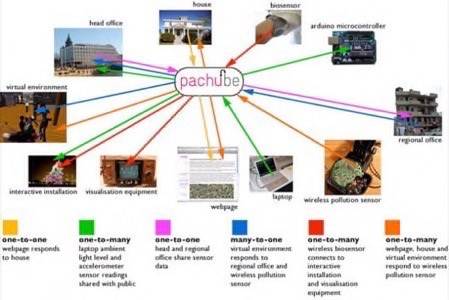One of the emerging trends of 2010 has been the Internet of Things, a term for when real-world objects get connected to the Internet. One of the key aspects of this trend is the data explosion that will occur when millions of objects send data to the cloud – mostly via very small sensors. Just as the ‘web 2.0’ era led to platforms for user-generated and ‘social’ content (think Facebook, Twitter, Google’s OpenSocial), the Internet of Things era will lead to platforms for sensor data.

It’s still very early in this era and the platforms we’ll profile here are at this point more about experimentation than commercialization.
HP Labs
HP’s Peter Hartwell: “one trillion nanoscale sensors and actuators will need the equivalent of 1000 internets: the next huge demand for computing!”
HP is building a platform called CeNSE, which stands for “Central Nervous System for the Earth.” The goal is to create a worldwide network of sensors, which will create a feedback loop for objects and people. These sensors will measure data such as:
- Vibration
- Tilt
- Rotation
- Navigation
- Sound
- Air flow
- Light
- Temperature
- Biological
- Chemical
- Humidity
- Pressure
- Location

Earlier this year I visited HP Labs and spoke to several of their leading scientists. Parthasarathy Ranganathan, a
Distinguished Technologist at HP Labs, told me in May that there will soon be millions of sensors working in real-time, with data sampled every second. He said there’ll be lots of different applications for this data; including retail, defense, traffic, seismic, oil, wildlife, weather and climate modeling.
Hewlett Packard is at heart a computer hardware and IT services company. It’s building this platform because it sees that the coming data explosion will lead to huge demand for more powerful computers and better processing of all that data. Or, in the words of CeNSE lead Peter Hartwell, “one trillion nanoscale sensors and actuators will need the equivalent of 1000 internets: the next huge demand for computing!” HP also says that producing sensors is “very similar” to producing ink cartridges, which it has a lot of experience in.
IBM
IBM’s Smarter Planet campaign is about connecting objects to the Internet and applying intelligence and services on top of that. Like HP, IBM uses the central nervous system analogy. “The planet has grown a central
nervous system,” it states on the Smarter Planet overview page.

IBM’s Smarter Planet web site: “The planet has grown a central nervous system…”
In January of this year, IBM CEO Sam Palmisano gave a speech in London which shed light on Big Blue’s sensor platform. He said that IBM had developed 1,200 “smarter solutions” up till that time.
Due to its scale, IBM has the ability to provide sensor systems to support city infrastructures. Palmisano talked about “four cities where IBM has helped deploy congestion management solutions, traffic volume during peak periods has been reduced by up to 18 percent, CO2 emissions from motor vehicles were reduced by up to 14 percent, and public transit use increased by up to 7 percent.” He listed other examples from healthcare, banking, power metering and retailing. IBM is also busy working with manufacturers and goods suppliers, such Danish transportation company Container Centralen.
A great introduction to the Internet of Things is this video, which IBM released in March:
Pachube
Of the three platforms for sensor data profiled here, Pachube (pronounced “PATCH-bay”) is the most open – no doubt because it is a tiny speck of a company compared to HP and IBM. So Pachube is hoping its open platform will entice external parties to build on it, whereas HP and IBM can rely more on partnerships.

We first reviewed Pachube in May 2009. It lets you tag and share real time sensor data from objects, devices, buildings and environments both physical and virtual. Pachube founder Usman Haque is one of the leading thinkers in the Internet of Things movement. His goal is for Pachube to become a platform that is responsive to and influences your environment – for example your home.
A glimpse of what products may look like built on an Internet of Things platform is the partnership Pachube announced in June this year. It’s with Current Cost, a producer of real-time energy monitors. Current Cost is using Pachube’s Internet of Things platform for the Bridge, an ethernet device that connects Current Cost electricity monitors to the Internet. Pachube is being used for data management on the Bridge, enabling the device to deliver tracking, notifications, comparison tools and more.

Who is Building the Best Central Nervous System?
HP, IBM and Pachube are all platform companies to watch when it comes to Internet of Things. In upcoming posts, we will look at some products being developed on these platforms.
Let us know in the comments what you think about the three platforms profiled here. Do you think any one of these Internet of Things platforms is poised to be a big winner, or is there another one that we didn’t mention which you think has potential?










